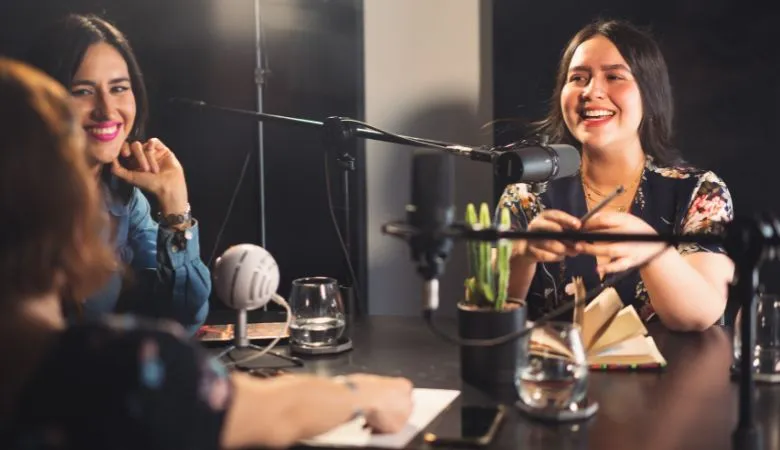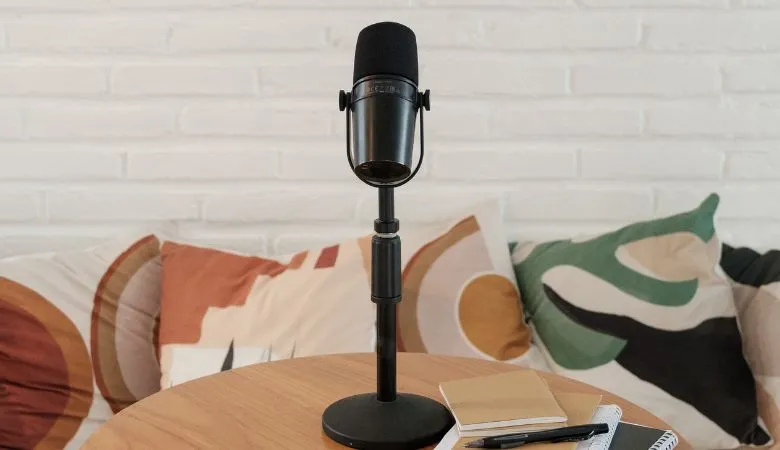How to Launch a Podcast Fast & Make It Successful
A podcast is a digital program in audio or video format that is broadcast on different online platforms regularly. In other words, they are the modern version of traditional radio.
According to Statista data, podcasts have reached 400 million listeners worldwide and this figure is expected to continue growing. However, podcasting has been a format for young people since its inception, as it receives the largest audience among users aged 16 to 34.
YouTube and Spotify are the favorite platforms for viewers to consume this type of content because they are free to access. The fact is that only a minority of people are willing to pay for this type of content, although curiously just over a third of the podcasts that are released are free.
Whatever the case, podcasting is a booming format and many brands and people are starting to open their own, and it is very common among those who have already built an online image. Despite this, not all of them succeed. What are the keys to success in the world of podcasting? In this article, we break down the factors that influence the success of this format and we tell you how to create a successful podcast in a short time so that you can join this world as soon as possible.

1. State the Topic, Objectives, and Concept
Comedy, news, and true crime podcasts are the most popular among audiences, especially in the US. However, this doesn’t mean you have to do this.
If you are the person who will be directing the podcast and who will be lending their voice or image to it, you should choose a topic that you like and are passionate about. On the other hand, if you are a brand that wants to create its podcast, you should make sure that the topic you choose is of interest to your audience. In the latter case, approach the choice of topic as you approach the choice of any other type of content in your marketing strategy. In this sense, it can help to look at the approach you have already made to your target audience and your buyer persona.
Once you’ve chosen a topic, think about what you want to achieve with it, which will also help you to gradually define the topic and begin to clarify the concept of the podcast. With the podcast, you may want to strengthen ties with your audience, become a reference in the sector, or reinforce your brand image.
Finally, it’s time to define the concept or, in other words, the type of podcast you want: interview, conversational, narrative, educational, monologue, round table. And, of course, don’t forget the style, which can be more formal, casual, friendly, or humorous. In summary, in this first part on how to create a podcast, you must:
Choose the theme of your podcast based on your target audience (especially if you are a brand).
- Set the goals you want to achieve with it.
- Decide on the type of podcast you want.
- Choose the project style.
Whether you want to make a podcast in a short amount of time or you don’t mind taking a little longer, you must dedicate the necessary time to this part, as it will be the foundation on which you build everything else.
2. Define the Identity of Your Podcast
Now it’s time to choose a name and the type of image you want to give to your podcast. In this regard, we recommend that you make a list with different names that you like so that you have different options in case it turns out that there is already a podcast with the name you wanted.
As for the image, logo, and colors you want to give it, if you are a brand we recommend using the same tones and style you already have. This way, it will be easier for the public to identify your podcast with your brand.
And if you are an independent person learning how to make a podcast, you can create the image yourself using free platforms like Canva to speed up the entire process. However, you can always hire graphic design professionals if you want a more professional result.
3. Go for Minimalist Production
This is one of the keys to streamlining the entire process of how to create a podcast. To make a product of this type, it is not strictly necessary to invest in professional equipment or expensive sets. While it is true that this can give your podcast a more professional touch, if you do not have much money and want to prioritize getting your podcast out as soon as possible, investing less in production is the most effective. Then, as your audience grows, you can gradually make improvements and updates to your equipment and your set.
With a computer, a headset, recording software (there are plenty of free ones on the market), a podcast hosting service, and a pop filter to make your recordings sound smoother, you can easily start a podcast. If you want to use video, you’ll also need to invest in a camera.
As for the environment in which you record, you must choose a place with little background noise. And if you are going to record with a camera, you should also think about the scenery that will be behind you.
4. Organize Content and Tasks
Now is the time to plan everything surrounding the podcast in your agenda, because in a project like this, it is key to have a well-structured organization. In this sense, you should write down:
- When to make the scripts.
- The release dates of each chapter, that is, the frequency with which you are going to publish.
- Editing days.
- The days when you are going to announce the chapters on social media.
- The dates are dedicated to preparing the promotion of the chapter, where for example you will have to select the promotional clips and the copy.
Of course, to carry out all these tasks you can also rely on professionals to help you, since if you want to develop it on your own you will need much more learning time.
As a recommendation, if you want to launch a podcast in a short time, it is preferable to invest in professional equipment that can help you with different tasks, rather than in expensive technological equipment or a very elaborate set. Otherwise, it can take time to learn everything and, in addition, you run a greater risk of making beginner mistakes.
5. Record, Edit, and Upload Your Podcast
Although we do recommend that you leave the editing and subsequent uploading of the podcast to the different platforms in the hands of professionals if you want to speed up the entire process, the recording (especially if it is at a more amateur level) is something that you can do yourself in the environment you have chosen.
To do this, you’ll need to use recording software and have a well-structured script to guide you. Remember, it doesn’t matter if you make mistakes, as this isn’t a live show. Editing will do the magic later. So whatever you record raw can later be fixed to make it look like everything you’ve said was recorded in one take.
6. Promote Your Podcast on Different Platforms
This part is less complex than editing and uploading the podcast, so you can do it on your own if you’re a small brand or a freelancer.
First of all, there should be an initial part where you promote the podcast, in general, to let your audience know about the launch of a new format. You can do this on social networks where you already have an audience and where you already have a presence. If you don’t have several followers yet, you can do it on those where your podcast’s target audience is. The most common way to do this promotion is on Instagram, X, TikTok, and even YouTube.
As for promoting each episode, you should do so on the same platforms you’ve chosen before. In addition, some podcasts that are broadcast on paid platforms choose to show part of the episode on YouTube to encourage the audience to pay to watch the full version.
In any case, during the promotion, don’t forget to use social media positioning techniques to increase your chances of being seen. And if you have the necessary means, you can also send press releases to different media outlets to inform them of the new launch of your podcast. You can even implement paid strategies on the platforms to give even more visibility to the project.

